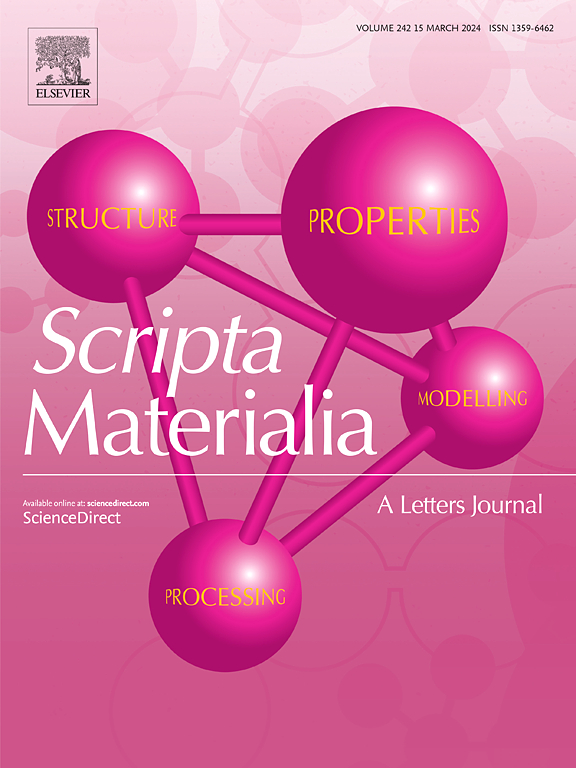块状致密多孔无铅压电陶瓷扫描电镜极化研究取得突破性进展
IF 5.6
2区 材料科学
Q2 MATERIALS SCIENCE, MULTIDISCIPLINARY
引用次数: 0
摘要
本研究利用扫描电子显微镜(SEM)的电子束极化方法,充分激活在高电场下难以极化的大体积多孔致密压电陶瓷。分析了扫描速度、曝光时间、试样厚度和溅射电极的存在等关键参数对极化过程的影响,并使用d33系数测量进行了评估。sem诱导极化激活了致密(410 pC/N)和多孔(500 pC/N)无铅BCTZ陶瓷,优于传统的油基极化(d33 <;350 pC / N)。这种扫描电镜诱导的方法提供了卓越的灵活性和精度,无需表面电极即可实现可定制的极化模式。本文章由计算机程序翻译,如有差异,请以英文原文为准。

Breakthroughs in scanning electron microscopy poling of massive dense and porous lead-free piezoelectric ceramics
This study exploits a poling method based on the use of the electron beam in scanning electron microscopy (SEM) to fully activate massive porous and dense piezoelectric ceramics, which are difficult to polarize in high electric fields. Key parameters such as scan speed, exposure time, specimen thickness, and the presence of sputtered electrodes, were analyzed for their effect on the poling process, with d33 coefficient measurements used for evaluation. SEM-induced poling activated both dense (410 pC/N) and porous (500 pC/N) lead-free BCTZ ceramics, outperforming traditional oil-based poling (d33 < 350 pC/N). This SEM-induced method offers exceptional flexibility and precision, enabling customizable poling patterns without the need for surface electrodes.
求助全文
通过发布文献求助,成功后即可免费获取论文全文。
去求助
来源期刊

Scripta Materialia
工程技术-材料科学:综合
CiteScore
11.40
自引率
5.00%
发文量
581
审稿时长
34 days
期刊介绍:
Scripta Materialia is a LETTERS journal of Acta Materialia, providing a forum for the rapid publication of short communications on the relationship between the structure and the properties of inorganic materials. The emphasis is on originality rather than incremental research. Short reports on the development of materials with novel or substantially improved properties are also welcomed. Emphasis is on either the functional or mechanical behavior of metals, ceramics and semiconductors at all length scales.
 求助内容:
求助内容: 应助结果提醒方式:
应助结果提醒方式:


